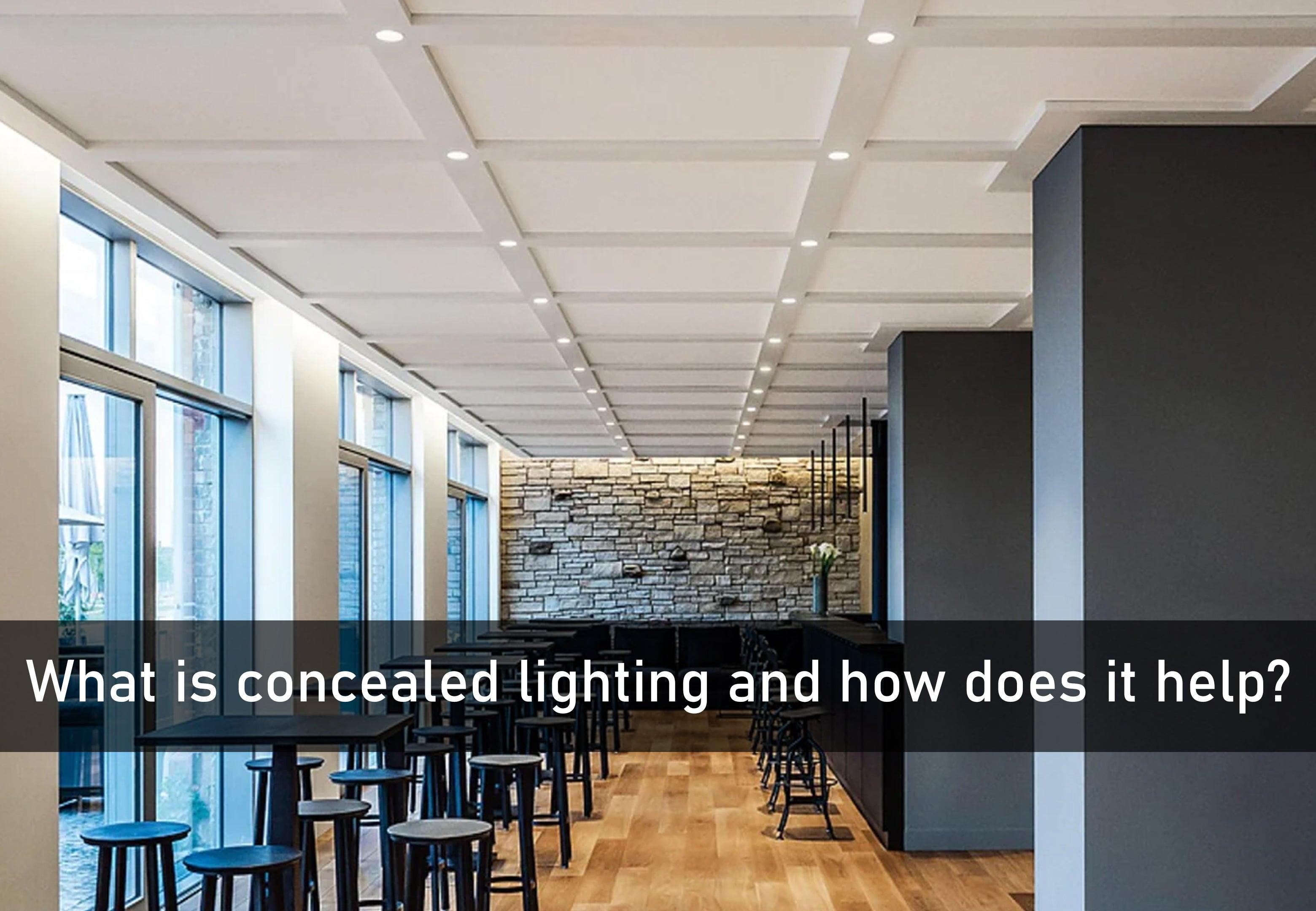
What is Concealed Lighting and How Does it Help?
The purpose of concealed lighting, often called hidden or indirect lighting, is to conceal the light source while providing an ambient glow to a space. Concealed lighting, in contrast to more conventional light sources, is not designed to illuminate an entire room but rather to set a particular ambience.
A room's aesthetics and practicality benefit significantly from using concealed lighting. It's a great way to improve the atmosphere, draws attention to the building's best characteristics, and soften harsh shadows and glare. In addition to residential settings like bedrooms, living rooms, and dining rooms, commercial locations like hotels, restaurants, and businesses can also benefit from concealed lighting.
Advantages of Concealed Lighting
Concealed lighting helps lessen the adverse effects of glare and shadows. Sharp shadows and bright spots from conventional light sources can be visually unpleasant and distracting. However, hidden lighting diffuses and softens the light, avoiding shadows and glare. Because of this, it is highly recommended for use in places where the focus is required, such as workplaces, libraries, and study rooms.
Columns, arches, and textured walls are just some of the architectural details that can be driven out with the help of concealed lighting. By shining light on these features from behind, hidden lighting may make a space feel more three-dimensional and lively. It's also great for emphasising other decors, like artwork or sculpture.
Those concerned about their carbon footprint or electricity costs often opt for concealed illumination. Concealed lighting can save energy while delivering sufficient light by using low-energy LED lights and focusing the beam in the required areas. The requirement for artificial lighting can be eliminated when hidden lighting is combined with natural light sources like windows and skylights.

Different Types of Concealed Lights
Cove Lighting
Cove lighting is the practice of putting lighting fixtures within a recessed cove in the ceiling or wall. Soft, indirect light is emitted by pointing the light upwards or downwards. Living spaces, dining rooms, and bedrooms all benefit from the cosy atmosphere that can be achieved with adequately installed cove lighting.

Soffit Lighting
Light fixtures can be mounted in the soffit to illuminate the bottom of a ceiling or overhang. The beam is then aimed down to illuminate the ground below. Both indoors and out, soffit lighting is used to draw attention to architectural details like eaves and arches. A well-planned lighting scheme can subtly use light sources such as LED strip lights, track lighting, downlighting, and uplighting.


Recessed Lighting
Recessed lighting aims to conceal the light source entirely into the ceiling or wall. Soft, diffuse illumination is produced by directing the light downward. Kitchens, baths, and corridors are just a few of the many places where recessed lighting can be put to good use.

Effective and energy-efficient recessed lighting schemes can quickly bring out your bedroom's best features. Lighting fixtures like spotlights, LED strips, track lights, and LED panels are ideal for this type of room because they provide adequate illumination and create a soothing ambience.

Considerations for Choosing Concealed Lighting
The size of the space
When deciding on recessed lighting, it's crucial to consider the room's dimensions. More lights may be needed to adequately illuminate a larger space, whereas fewer lights may suffice for a smaller room. Over-illumination can be painful for the eyes, so finding a happy medium between the two is essential.

Span of the Ceiling
The height of the ceiling also influences the appropriateness of recessed lighting. For instance, recessed lighting suits spaces with high ceilings more than cove lighting, and vice versa. Lighting fixtures should be selected with consideration for the size of the room and the height of the ceiling.
Light colour temperature
When deciding on recessed lighting, it's also crucial to consider the light's colour temperature. It's best to use cool white light in areas where focus and task lighting are essential, such as offices and kitchens, while warm white light is perfect for creating a cosy and inviting ambience. Choosing the ideal colour temperature is crucial for setting the appropriate mood and ambience.
Space's Intended Purpose
When deciding on recessed lighting, it's also crucial to consider the room's intended use. For instance, bright, task-oriented lighting may be necessary for the kitchen to make food preparation more accessible. In contrast, warm, soft lighting that produces a soothing mood in the bedroom may be preferable. Lighting should be selected to meet the needs of the space's intended use and the people who use it.
Lighting Design Considerations for Concealed Light Fixtures
Position of Concealed Lights
Proper placement of hidden lighting is essential for achieving a particular look and feel. Cove lighting, for instance, should be set up to draw attention to the room's architectural details, while soffit lighting should be set up so that it casts light where it's needed below. When determining where to install covert lighting, it's crucial to consider the room's layout and intended use.
Multiple Light Sources
Lighting can be layered to achieve a wide range of effects and atmospheres by using numerous light sources. A layered lighting effect can be achieved by combining concealed lighting with additional illumination sources, such as table lamps or pendant lights. This can make the room more exciting and functional for various purposes.
Compatibility with Existing Lighting Systems
Concealed lighting should be coordinated with other types of lighting to create a coherent atmosphere. In the kitchen, recessed lighting can be used for task lighting, while in the living room, cove lighting can produce a cosy mood. It's crucial to think about how various light sources will interact with one another to achieve the ideal atmosphere.
 Talk On Call
Talk On Call Chat On WhatsApp
Chat On WhatsApp


